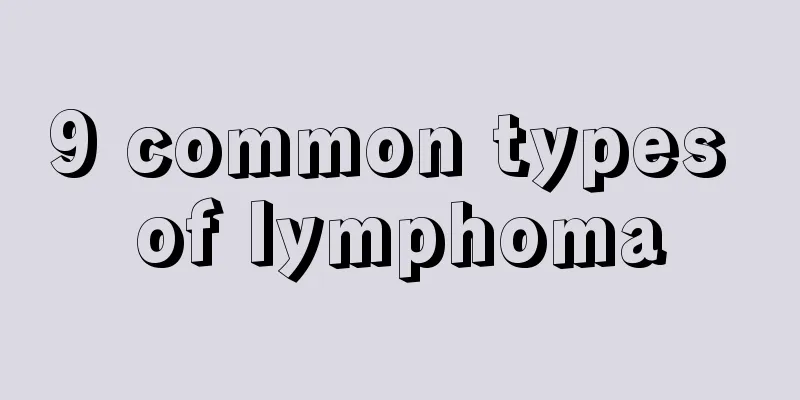9 common types of lymphoma

|
Lymphoma originates from lymph nodes and lymphatic tissues. Its occurrence is often related to the malignant transformation of certain immune cells produced by lymphocyte proliferation and differentiation during the immune response. It is more common in young and middle-aged people aged 20 to 40, and more common in men than in women. In recent years, its incidence has been increasing, which may be related to environmental deterioration, longer life expectancy and progress in histopathological diagnosis. There are 9 common subtypes of lymphoma in clinical practice: 1. Marginal zone lymphoma refers to lymphoma originating from B cells between marginal zone lymph follicles and follicular mantles. It can be divided into lymph node marginal zone B cell lymphoma, splenic marginal zone cell lymphoma and extranodal marginal zone B cell lymphoma of mucosa-associated lymphoid tissue. 2. Follicular lymphoma is a lymphoma that occurs in the germinal center. It is derived from B cells and responds well to chemotherapy, but it is prone to recurrence and becoming invasive. 3. Mantle cell lymphoma originates from B cells in the mantle of follicles. It is more common in elderly men, develops rapidly, has poor chemotherapy response, and the average survival time is 2 to 3 years. 4. Diffuse large B-cell lymphoma is the most common type, which is difficult to treat and has a 5-year survival rate of only 25%. 5. Burkitt's lymphoma is highly malignant and invasive, often occurring in children, and is characterized by involvement of the jaw. 6. Angioimmunoblastic T-cell lymphoma is a type of aggressive T-cell lymphoma and is often treated with chemotherapy containing doxorubicin. 7. Anaplastic large cell lymphoma originates from T cells and progresses rapidly, often accompanied by skin invasion, with or without lesions in lymph nodes and other extranodal sites. 8. Peripheral T-cell lymphoma is an aggressive T-cell lymphoma that often affects the skin, lungs, and central nervous system. Most patients have immune deficiencies, and chemotherapy is ineffective, with a poor prognosis and a survival period of less than one year. 9. Mycosis fungoides is an indolent lymphoma, and the proliferating cells are mature helper T cells. |
<<: Typical manifestations of Hodgkin's lymphoma
>>: 5 methods for clinical diagnosis of lymphoma
Recommend
How long can a breast cancer patient live after removing lymph nodes
Many women think that breast cancer is a type of ...
What are the main methods for examining brain cancer?
What are the main examination methods for brain c...
About esophageal cancer nursing issues
How should patients with esophageal cancer be car...
How many years does 10 courses of chemotherapy for prostate cancer last? What are the treatments for prostate cancer?
How many years can 10 courses of chemotherapy for...
Where is the carotid triangle?
The so-called carotid artery refers to the artery...
What are the common prevention points for small cell lung cancer?
Many patients with small cell lung cancer do not ...
What are the early symptoms of bladder cancer
When treating bladder cancer, it is often difficu...
A review of the causes of osteosarcoma
Before introducing the causes of osteosarcoma, le...
What are some delicious foods that can prevent liver cancer? Eat more of these to reduce the risk of liver cancer
Eating more grains may reduce liver cancer risk D...
How to relieve itching caused by yam allergy? 3 tips to help you relieve itching quickly
Yam is a common food ingredient in daily life and...
There are six ways to treat vomiting. How many do you know?
There are many factors that cause vomiting, such ...
What are the symptoms of renal hamartoma
The incidence of renal hamartoma is increasing. A...
Which embryos implant faster, frozen embryos or fresh embryos?
Which embryos implant faster, frozen embryos or f...
What causes back pain in the elderly?
Back pain is a very common disease in life. The e...
What to eat for nasopharyngeal carcinoma radiotherapy? Is it effective?
Diet after radiotherapy for nasopharyngeal cancer...









